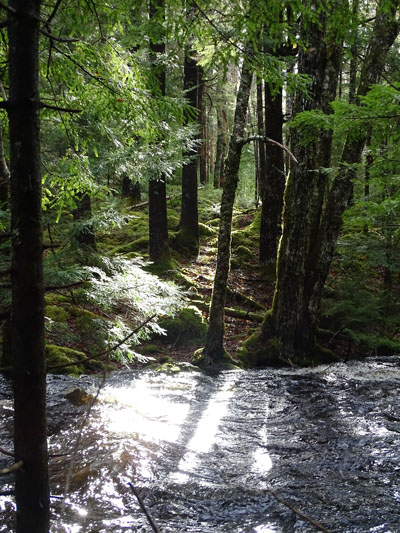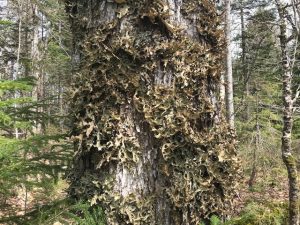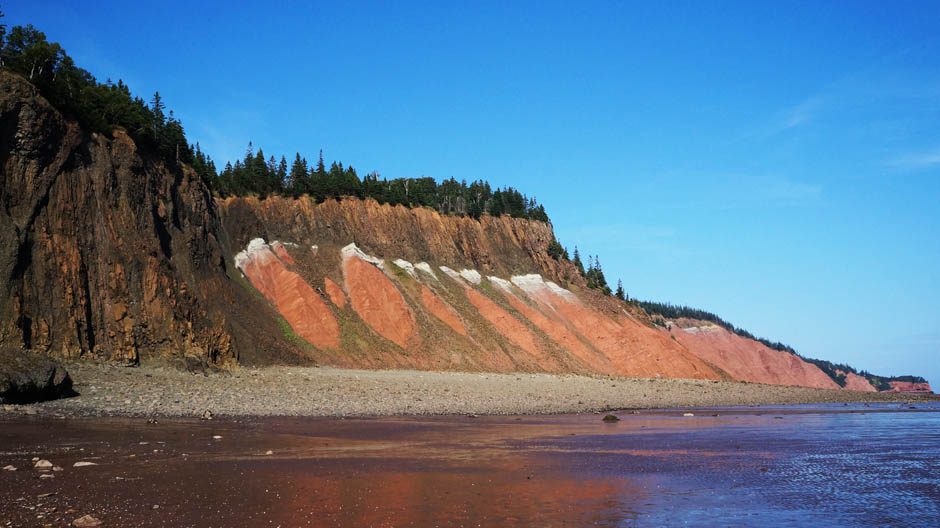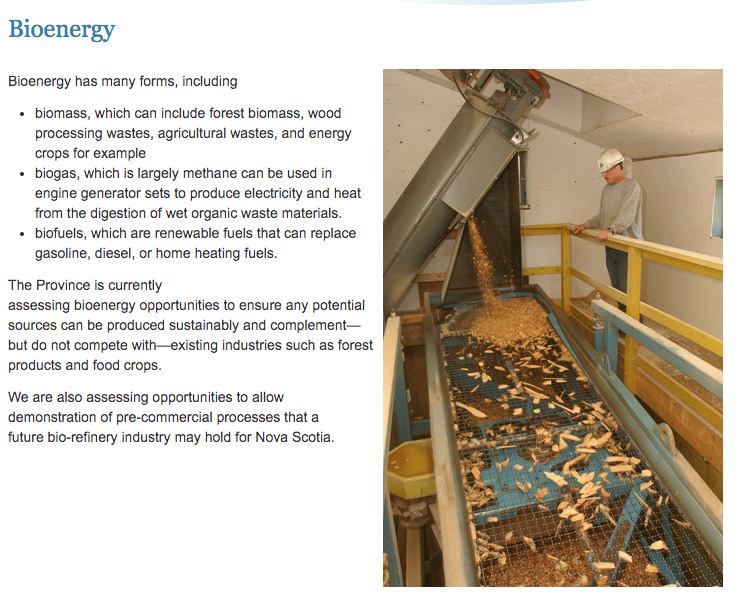 Premier McNeil’s announcement Dec 20, 2019 that he would be honouring the Boat Harbour Act, and Northern Pulp’s announcement that they would close The Mill mark a historic transition on several fronts.
Premier McNeil’s announcement Dec 20, 2019 that he would be honouring the Boat Harbour Act, and Northern Pulp’s announcement that they would close The Mill mark a historic transition on several fronts.
The sober part is the direct loss of jobs in rural areas and further indirect effects on the rural economy in NS.
I think all Nova Scotians are empathetic to the stresses that is causing to many individuals, families and communities; it was written on the face and in the voice and words of Premier McNeil when he made the announcement, and likewise on the face and in the voice and words of Chief Andrea Paul (re: CBC, Dec 20, 2019)
The hopeful part is that it means we have an opportunity to ‘get it right’ this time around, and come up with alternatives to The Mill that do not compromise our environment but do provide sustainable livelihoods based on our forests.
It is also incredibly opportune as it is at exactly this juncture that the world seems to be coming to grips with the reality of climate warming, biodiversity losses and environmental degradation more generally; we Nova Scotians could really carry our weight in regards to mitigating climate and biodiversity decline change by making fundamental changes in the way we view and manage our forests.
I have been very heartened to already see active discussion on social media of how we might move forward with alternatives to The Mill which can provide both more sustainable livelihoods AND contribute to resolving the environmental crises. (See example below).
My New Year’s wish is that our government recognizes this opportunity for what it is and, following on the Boat Harbour decision, maintains a sober, objective, sensitive and informed approach to addressing the real problems that face us locally and globally at the beginning of 2020.
I might as well be forthright about my concern which is that with the collapse of The Mill there will be pressure to move quickly to develop alternative markets to the market that has been lost for “low value wood”.
There is already a quickly moving initiative in the works at L&F on wood energy but without proper modelling/accounting for impacts on GHG emissions (view post on NSFN Nov 23, 2019). That’s where we need the sober, objective part, also to recognize that the existing Port Hawkesbury biomass plant is NOT green energy .
Likewise, I can imagine that there is/will be discussion of replacing The Mill with a biorefinery. Developing a biorefinery was high in the plans of the [old] Department of Natural Resources and, while it is not highlighted by Lands and Forestry, the concept is hardly dead, now residing within Energy and Mines:
Perhaps such endeavours are viable and somewhat sustainable in areas of Canada where working forest rotations are of the order of 80 to 150 years. I think it is very likely that they are NOT sustainable in Nova Scotia with its several centuries of intensive forest harvesting (now on rotations of 40-60 years or less) combined with a predominance of inherently nutrient poor bedrock and soils.
From an ecological perspective, there is no such thing “low value wood” in Nova Scotia!
If schemes are considered by government to create alternative markets for “low value wood”, their potential impacts on forest productivity, biodiversity and carbon sequestration need to properly and openly evaluated. L&F has the tools to do that, they just need to apply them, re: the Forest Nutrient Budget Model, hiring of a Carbon Modeller and their, albeit publicly elusive, Landscape Level Planning.
Anyway, Not to pre-judge… perhaps that is already happening and we will soon be informed about it.
——-
Annapolis Royal & Area – Environment & Ecology Jan 1, 2019:
Discussion of work options for displaced forestry workers
 BW: INFORMATION GATHERING::: Hello everyone! First, Happy New Year! I hope 2020 will be a year of positive change for all of us. Now, on to a couple of questions. I’m hoping some of you will jump in and share your thoughts.
BW: INFORMATION GATHERING::: Hello everyone! First, Happy New Year! I hope 2020 will be a year of positive change for all of us. Now, on to a couple of questions. I’m hoping some of you will jump in and share your thoughts.
On the Healthy Forest Coalition page, this question was asked::
Do the friends of the Healthy Forest Coalition have any suggestions for work options concerning the thousands of displaced workers in the forestry industry. Now would be a good time to come forward with some low impact, environmentally responsible work options that would help lead the way into a new decade.
It’s a good question so I’m reposting it here for discussion.
First — if you have ideas, please post them.
Second – My suggestion was creation of a directory of forestry people willing to work on small acreage woodlots doing such things as felling hazard trees, clearing walking trails, removing invasives like Buckthorn, piling brush for wildlife shelter, etc…
SO!! What do you think? Is there work around for that kind of thing? Would this area around Annapolis Royal be able to generate enough work to keep a few forestry people busy if they built up a clientele base? How many on here have a woodlot of some size (mine is just a couple of acres) who would be willing to hire someone to do this kind of work — someone who understands your goal for your property (mine is chiefly wildlife habitat). This isn’t a commitment — just getting some idea of whether there is any interest. Would you be willing to pay more than peanuts for someone to work a couple of days (or more) per year doing this kind of thing?
Can I get some feedback? Maybe some of you are doing this already. I’ve been doing my own work until now but as a result of Dorian and my age, I will probably be looking for someone in the near future. I’m sure there are more in our group in much the same boat as me. Anyhow, let’s hear from some of you. Share your thoughts!
CA: There’s a general shortage of tradesmen/contractors of any kind in the Valley now, even as population ages. If this is do-able and appeals to some forest workers, carpenters are in short supply and I think licensing does not take too long.
BW: I suspect quite a few forestry people may already have other marketable trades, but I’m thinking of actual forestry-related work, businesses, etc.. that could take up the slack. There may be some good creative solutions like — who knows — growing shiitake mushrooms on oak logs, but you have to think one step beyond that — marketing the mushrooms — the market for fresh mushrooms would not be large enough, so might require some kind of processing facility to dry and package them for larger distribution and steadier cash flow. Anyhow, I think it’s good to think of lots of possibilities
FS: CG may be able to advise someone on transitioning to caring for trees
VS: think a list of Forestry workers is a great idea. So many uses for the trees felled from climate chaos.
Another use could be to use it in gardening/ farming in the very fast growing techniques of Hugelkultur.View The Many Benefits of Hugelkultur
FS: I wonder if Instant Oldgrowth might be a business – instead of just planting little Conifer seedlings in reforestation projects, dig up some pit & mound microtopography, enhance low spots into vernal pools, add nutrients as manure, plant a diversity of mid- and shade-tolerant trees, and provide instant shade and soil texturization with Jerusalem Artichokes, with planting of forest floor herbs, and introductions of invertebrates and fungi via soil samples from nearby oldgrowth.
BW: It would interesting to see just what is possible, especially using salvaged plant and earth materials from areas which are slated for destructions. I’ve seen that done in other places by groups who rescue cacti, forest plants and so on. Creation of vernal pools is also something that could be done. If we’re going to keep on destroying forests at the present pace, I guess we should be prepared to attempt to “create” some pseudo-old-growth forests. Anyhow, “forestry landscaping design and maintenance” businesses could end up being a sort of growth industry. Seems more practical and environmental than lawn maintenance businesses.
MH: I know so little, I wouldn’t even know whom to start asking to do what. But I love this idea. We have 60 acres of forest. For now, it’s just there, with some signs of past ‘harvest,’ etc.
BW to MH: I strongly suspect that are many in this area — and in this group — who have forests that could use some maintenance work – whether to fell some hazard trees, maybe take down some rickety trees that are shading healthy trees that would be “released” to grow tall and strong — remove diseased or invasive trees (Buckthorn being a real thug). However, many aren’t interested in managing with the end result of selling timber, but in creating the best wildlife habitat — which might mean leaving thickets of spruce for nesting birds, or creating brush piles, leaving standing snags for cavity dwellers, and so on. It would be nice to have a directory of forestry people who have the skills and knowledge to work with landowners who have creation of wildlife habitat as their primary goal.
CM: GOD knows NSP cannot keep up with dead falls and power outages.
Along the highways we all see dead falls against lines.
They could go to work TODAY on those !!
BW to CM: Very true! After Dorian, I had to practically beg to have a tree trimmed that was threatening the power lines to my place and my neighbour’s. They did eventually send someone out, but they just cut off a branch that was touching the line and did nothing about the rest of the branches even though I told them the tree was falling over — and they could see that rather plainly too. In the end, after enough hassling, they did send someone back to cut the rest of the branches off the tree, but the leaned over tree with no branches is still there — looks goofy, but at least it isn’t going to knock down the power lines. I see stuff like this all over the place. It’s work for someone but I guess no one wants to pay for it.
DK: I would gladly hire someone for several days / year to help clean up felled trees and snarly invasive….only 2 acres
(another) DK: I would hire someone to clear up a small old apple orchard.
RD: When I was working full time as a forestry contractor I advertised for this type of work on several occasions. What I found was I had a lot of tire kickers but not a lot of people actually willing to spend the money required to do this type of work. It seems there may be more of a market now and I’m considering giving it another try, at least on a part time basis.
BW: Well, it hasn’t taken long at all to come up with a few properties where people would pay to have their small woodlots cleaned up. With a bit of effort, I think a forestry worker — or a small team of them — could drum up a good bit of work just around this area. I know that, after the ice storm of ’98 in eastern Ontario, it took ages to clean up the forests as there weren’t enough people who could do the work. We never actually did get all of our forest cleared up – we had about 60 acres. The back 25 acres was still pretty rough a decade or more later.
FS: but there was gov’t money to clear the coarse woody debris from the streams, thereby depriving the biodiversity of a big food & structure bonus
BW to RD: I have a feeling that the market is probably different now — and maybe the way of advertising would make a difference. I’m not much inclined to hire based on ads in flyers or bulletin boards. I will look at facebook pages, especially if someone posts photos of their work, etc.. I’m also very interested in recommendations from others. That’s where a group such as this one or the Bridgetown community group where people share contact info for tradespeople, or tree removal people, etc.. is such a good thing.
BB: We only have about an acre of treed land, but love the idea of paying someone who knows what they are doing to clean it up.
Also, Wesley Banks is a small woodlot owner/operator who came recommended through the Annapolis Valley Extinction Rebellion group as a supplier of sustainable fire wood. Maybe coordinating with him to create a team of selective harvesters to be part of his supply chain might be worth exploring…?
Also, if NS government is setting aside $50 million, could some of this be allocated for the types of projects being suggested on this thread? (I think of Ryan saying there wasn’t a market for this a while ago, but if some government incentives were available, people might want to take advantage of that.)
Also, people like the Snow Lake Keep folks who are trying to rehabilitate clear cuts into ecologically sensitive homesteads will likely need help cleaning up all the slash left behind. (Can that slash be upcycled into something marketable/ usable? Someone mentioned hugelkulture gardens.)
Perhaps NS Power (with some of the $50 million government money as incentive) could be enticed to clear hazardous trees near power lines with displaced forestry workers and pay half their salary…?
If Nova Scotia Tourism wanted to help, maybe they could employ displaced forestry workers to help manage natural tourist attractions and help retrain some into habitat managers…?
Just a few ideas that came to mind…
RD to BB: I would like to see the federal government be involved with funding. If you look around the rest of the country almost every province has forest research centres and accredited forestry programs in their colleges and universities, all of which I am sure receive federal funding. We don’t have anything like that in NS and the Canadian Forest Service doesn’t have much of a presence here. It would be great if they would create an annual fund to help pay for forest restoration work as part of an initiative to combat climate change.
BB to RD: That would be fantastic. I could see the NS govt creating funding for something like the Medway Forestry Cooperative to expand and hire transitioning or displaced forestry workers. It would be amazing to see NS shift directions from slash and burn forest management to ecological forestry.
BW: Some excellent ideas. I really think there is an opportunity for some forestry workers to do as written to RD above — cater to a sort of niche market of people who are interested in managing their woodlots for nature, preservation of native plant colonies, maybe creation of certain features such as vernal pools (that’s actually become something of a goal in certain naturalist circles). That kind of work would be of great interest to some who work in forestry. I also know that it’s more along the lines of what MOB must be teaching in the NSCC courses she does – -she is a certified tree marker forester originally trained in Ontario and really knows her trees, plants, etc.. Hopefully she is passing on that kind of knowledge to her students – I hear that she is. Anyhow, it would be really NICE to have a small forestry team — small contractor — who would be willing to work on smaller properties and knew what’s what. I think the market is there for such a thing — and that’s really what we need to be doing — showing that there are some of us out here who would provide a certain kind of work.
Discussion Continued, Jan 2, 2020:
GN: One area of need in Nova Scotia is food self sufficiency. Loans, grants, and training could turn some of the clearcut area into homesteads that could feed people with local produce and meat.
We need more greenhouses that can extends our growing season, and there are plenty of niche markets available.
GB: Reforesting some of the clearcut areas that won’t be needed any more into Acadian Forests would provide some temporary work.
Turning crown land over to private woodlots on low cost mortgages, with the proviso that they be managed sustainably. Paying carbon offsets for standing trees from our cap and trade system.
FS: the hypothesis that the province can fulfill its more-then-constitutional duty to manage them sustainably having been falsified…
GF: This is a very interesting concept . I’m not sure if there is anyone in this group that has experience building phone
Apps to connect the land owners with the possible workers , that’s the first think that came to mind. It might even be possible to get some access to the $50 000 000 for this transition. I’m sure there are people in government that could do it , but its likely best left in the private sector initially to get it completed.
BW: GF – Yes, this shouldn’t actually be a difficult thing to set up. I think there are various ways this kind of thing could be set up – but it should be web-based so that people can get more info about the worker or team – see some pics — and people could leave reviews just like they do with anything else.
GFL One of the things iv floated in conversations is to follow pei lead what can be done in monoculture plantations ready for there first merchantable thinning. It’s no one fault there that way it was the thinking at the time. On pei when you do the first merchantable thinning your allowed to cut up to 10% of the area as a clearing. Then site prepare and plant in these clearings . What’s key pei nursary grows all species related to the acadian forest. The plantation will never be a true wild acadian forest but at least it would start to contain the species. The government has to realize they have to fund this and not the wood buyers. They need to follow pei lead at the assistance level or it will go no were. On the island you can get site preparation assistance to attach a site preparation devise on the end of s spacing saw to create micro sites for planting, then there planted
BW: I agree. there would have to be some kind of compensation for doing something like that for that. I don’t know how that part would work. However, I think there would be a lot of interest in doing that on private lands – not necessarily on plantations, but on lands that were clear-cut and where people would like them to grow back as more an Acadian than a plantation softwood forest. It does take having forestry nursery stock available. I guess the main nursery here has been geared to growing conifer stock, but that could be changed – just takes a couple of years to transition. When I lived in eastern Ontario, we could get a very wide variety of hard and softwood nursery stock up to about 4 years old from the Ferguson Forestry Centre in Kemptville. They also sold bushes and small trees suited to doing fencerow type wildlife habitat (berry bushes and so on). There were a lot of people such as ourselves who bought anywhere from a few hundred to a few thousand trees each year. As I’ve described in the past, we planted trees on some very run-down potato farm land – about 50 acres into trees and the rest we left as oldfield meadows for the Woodcock, Bobolink, etc.. and a lot of milkweed and other oldfield plants for insects like Monarch and other butterflies. We grew mainly hardwood and mast trees, but also softwoods and things like Elderberry, Serviceberry and such. The Ferguson Forest nursery provided employment (full time) for a few people and a lot of seasonal work for those who either transplanted young seedlings into the nursery fields, or who brought in the nursery stock to make up orders. It was a busy place in the springtime when people were picking up their orders or orders were being shipped out. Prices for nursery stock were very reasonable, so that encouraged people to plant. Anyhow, I like to hear of ideas and plans for improving biodiversity. Having a good variety of trees in forests helps to reduce the impact when some disease or pest gets in – like the Emerald Ash borer when it struck hard in Ontario — and now the Butternut Canker, etc..
OM: I ALREADY Pay woodsies $30 /hr plus for taking down dangerous trees so they don’t fall on us as we ride by in therapeutic riding. Just paid big bill for opening up a 60 space in the woods for a round pen. I have always paid fair price. I will continue to do this but I do not have full time work for a woodsie that’s for sure.
BW: PM – I think most of us here appreciate having forestry people who will do the work and we don’t mind paying for it – probably better than some contractors have been paying. I guess the thing will be volume of work — but good workers who have good people skills will probably do okay. My usual firewood guy stopped in this afternoon to see if I would like anything as he decided to make use of the good weather and cut a few cords while he was back cleaning up his woodlot from Dorian. I said I’d take them but didn’t want them delivered until spring — but I’d pay for them now if he liked. He declined — said it was good enough knowing how many cords to put aside for me. I prefer to buy from a neighbour and I will certainly hire local people whenever I can. Anyhow, I just thought — there’s a fellow thinking ahead to be sure he has all his wood sold.

